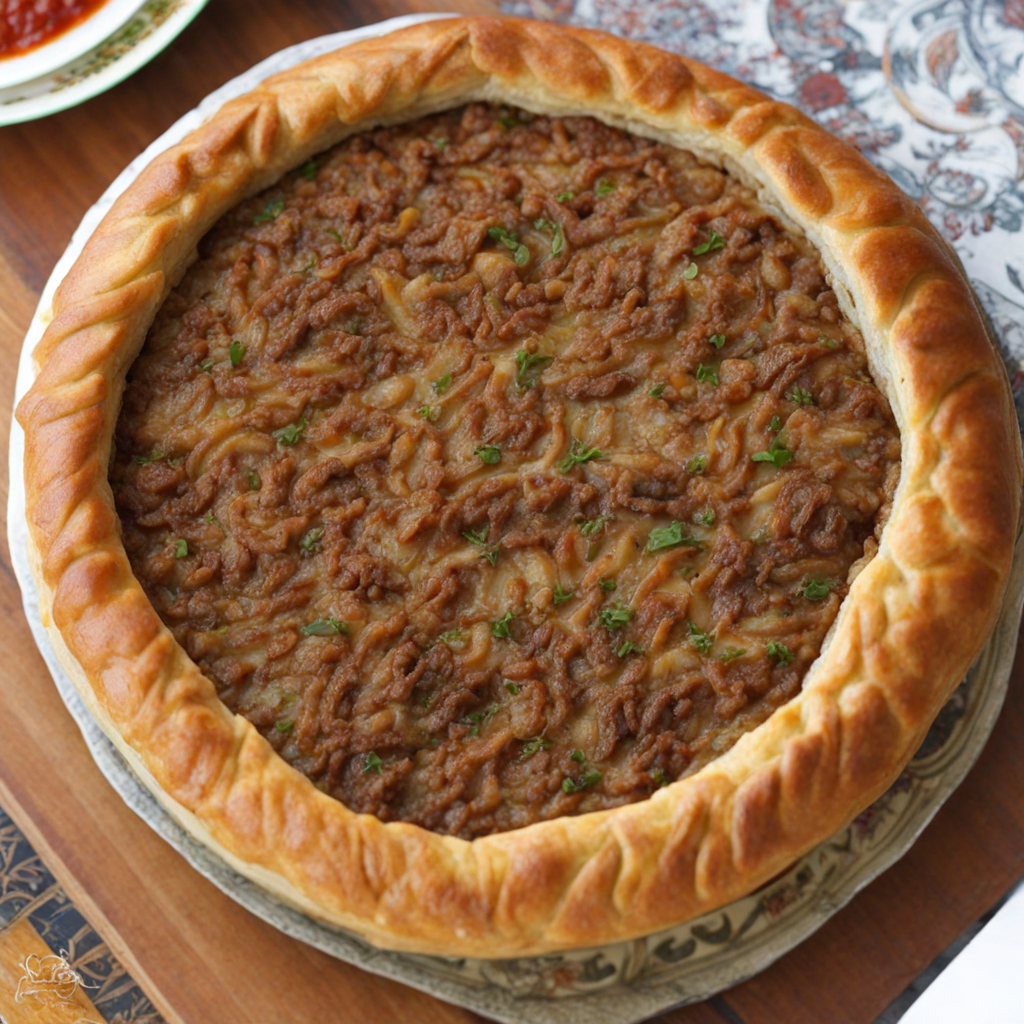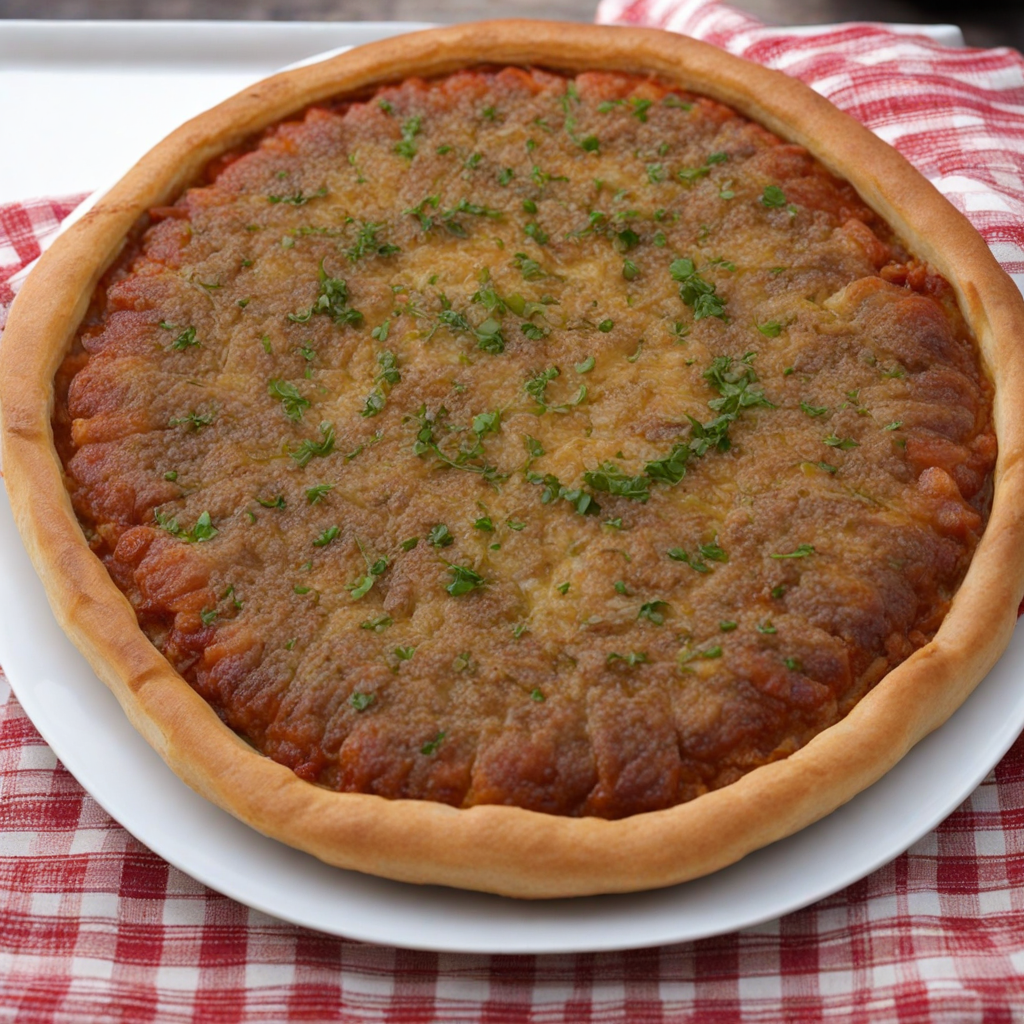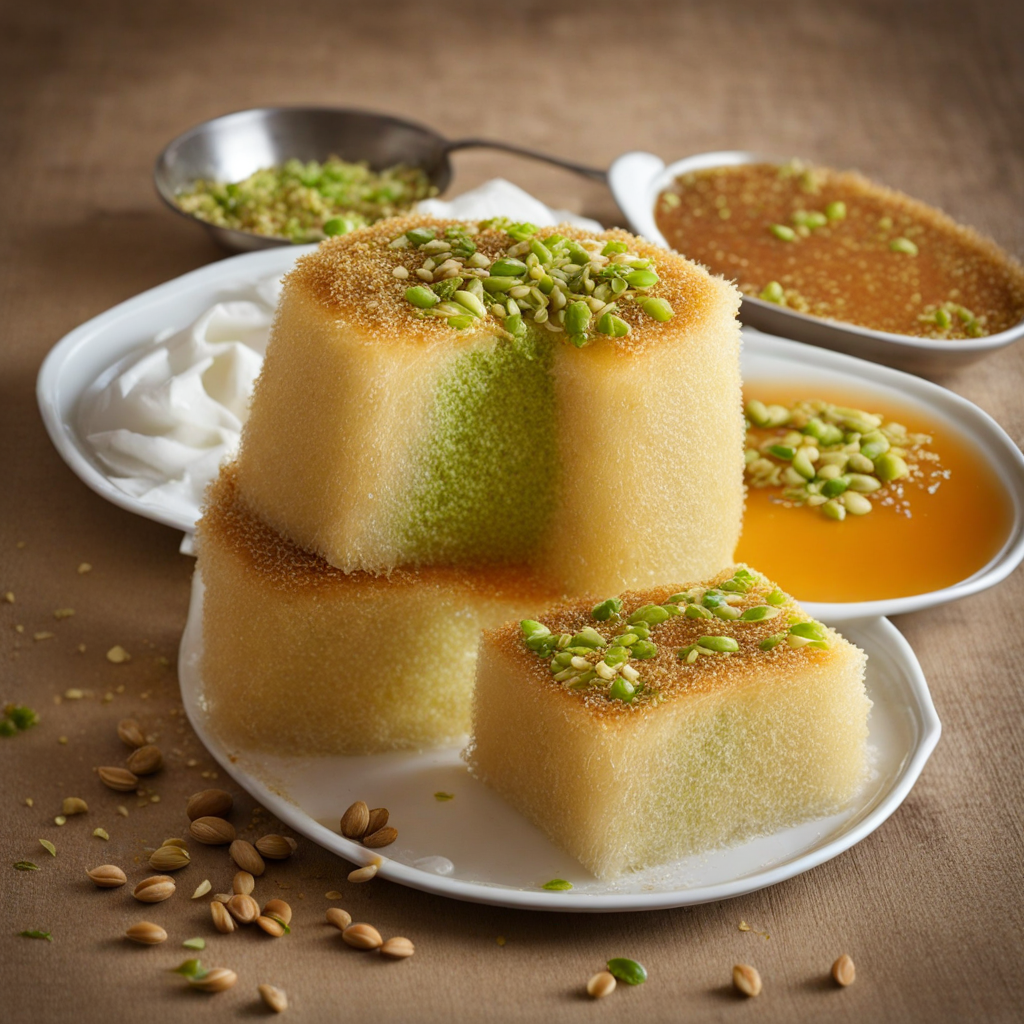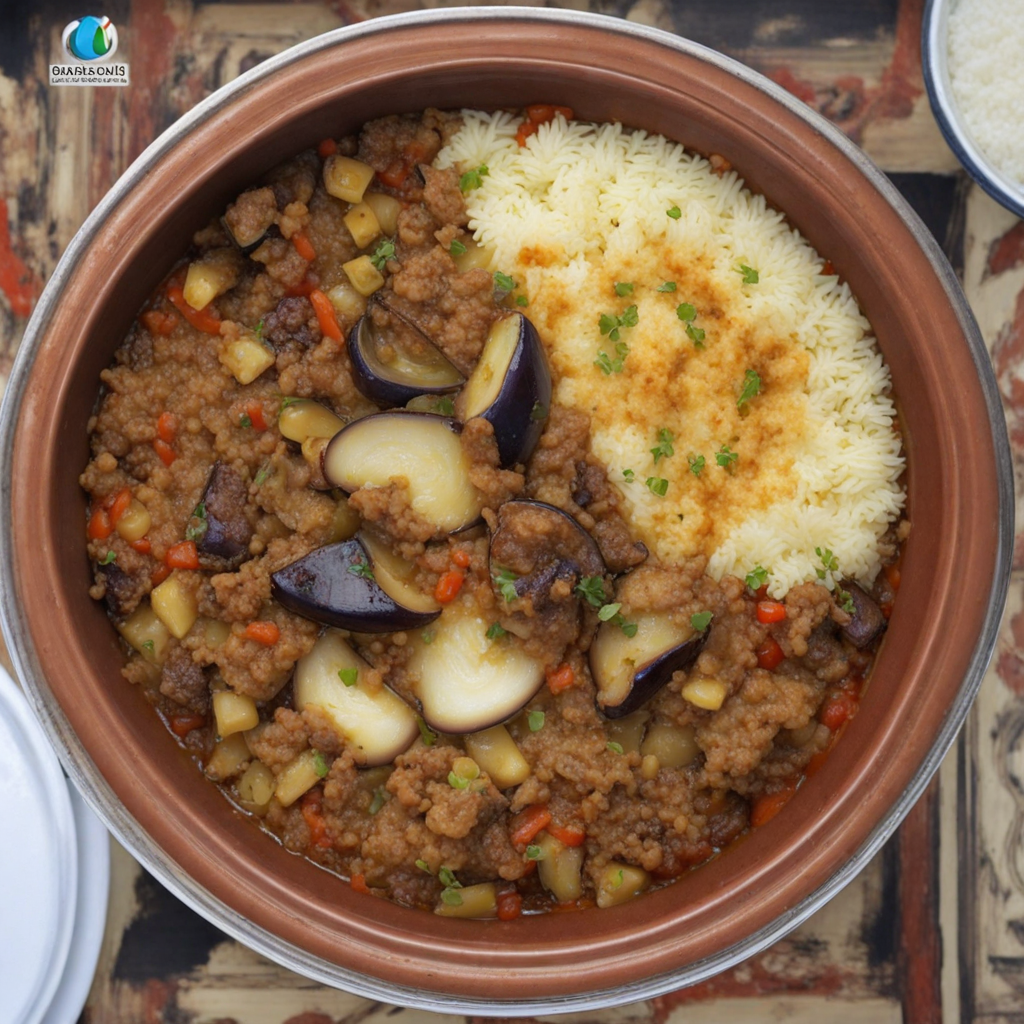Sfiha
Sfiha, often referred to as "Arabic pizza," is a delightful dish hailing from Syria that offers a unique blend of flavors and textures. This savory pastry is typically made with a soft, thin dough that serves as a base for a rich, spiced ground meat topping. The meat, often a mix of lamb or beef, is seasoned with aromatic spices such as cinnamon, allspice, and nutmeg, giving it a warm, fragrant profile that captivates the palate. The addition of fresh herbs like parsley or mint enhances the dish's freshness, while a drizzle of olive oil adds a touch of richness, making each bite a harmonious balance of flavors. What sets Sfiha apart is its versatility in preparation. While the classic version features minced meat, variations abound, accommodating different tastes and dietary preferences. Vegetarian options may include a filling of spiced vegetables or cheese, allowing for a range of delightful experiences. The dough itself is often hand-stretched, creating a light and airy texture that perfectly complements the hearty filling. Sfiha is typically baked until golden brown, resulting in a crispy exterior that gives way to the succulent, flavorful filling inside. This dish is not only a treat for the taste buds but also a cultural experience, often enjoyed during gatherings and celebrations. Served warm, Sfiha can be accompanied by a variety of side dishes, such as yogurt or tahini, which add creaminess and depth to each mouthful. Whether enjoyed as a snack, appetizer, or main course, Sfiha invites you to savor the rich culinary heritage of Syria, making it a must-try for anyone eager to explore new and exciting flavors.
How It Became This Dish
The History of صفيحة (Sfeeha) from Syria Introduction Sfeeha, also known as Syrian meat pies, is a culinary delight that has captured the hearts and palates of many around the world. With its origins rooted deeply in the Levantine region, sfeeha is not merely a dish; it embodies a rich tapestry of history, culture, and tradition. The evolution of sfeeha tells a story of migration, adaptation, and the enduring power of food to connect people across time and space. Origins of Sfeeha The history of sfeeha can be traced back to ancient times in the Levant, a region that includes modern-day Syria, Lebanon, Jordan, and parts of Israel and Palestine. The name "sfeeha" is derived from the Arabic word "صفيح," which translates to "flat" or "thin," referring to the flatbread that forms the base of these delicious pies. While the precise origins are difficult to pinpoint, culinary historians suggest that the dish likely evolved from various influences brought by trade routes that crisscrossed the region. The Levant has long been a crossroads of cultures, where the culinary practices of the indigenous peoples mixed with those of traders, travelers, and conquerors. The use of spices, herbs, and meat in cooking can be traced back to the ancient civilizations that flourished in this area, including the Phoenicians, Romans, and Byzantines. It is believed that the concept of stuffing dough with a mixture of meat, spices, and vegetables has its roots in these rich culinary traditions. Cultural Significance Sfeeha is more than just a meal; it holds a special place in the hearts of Syrian families and serves as a symbol of hospitality and communal eating. Traditionally, sfeeha is prepared for gatherings, celebrations, and special occasions, such as weddings, holidays, and family reunions. The act of making sfeeha often involves the participation of the entire family, with each member contributing to the preparation, from mixing the dough to stuffing the pies. In Syrian culture, food is a central element of social gatherings, reflecting the values of generosity and togetherness. Sfeeha, with its savory filling and inviting aroma, is a dish that encourages sharing and connection. It is often served alongside other traditional dishes, such as hummus, tabbouleh, and baba ghanoush, creating a vibrant spread that highlights the diversity of Syrian cuisine. The Evolution of Sfeeha Over Time As with many traditional dishes, sfeeha has undergone various transformations over the centuries. The basic recipe typically consists of a dough made from flour, water, yeast, and salt, which is then rolled out and filled with a mixture of minced meat (usually lamb or beef), onions, and a blend of spices such as allspice, cinnamon, and nutmeg. The filled dough is then baked until golden brown, resulting in a flaky and flavorful pie. Throughout the years, different regions within Syria have put their unique spin on sfeeha. For instance, in Aleppo, known for its rich culinary heritage, the pies are often larger and can be filled with a variety of ingredients, including lamb, beef, or even chicken. The use of local spices and herbs can vary significantly, with Aleppine variations sometimes incorporating pomegranate molasses for an added tang. In contrast, the coastal regions of Syria have their own take on sfeeha, often incorporating seafood or using a lighter dough. The diversity of ingredients reflects the geographical and cultural influences that shape Syrian cuisine. Additionally, the modern era has seen the introduction of vegetarian options that utilize spinach, cheese, or lentils, catering to the changing dietary preferences of consumers. Global Spread and Contemporary Significance The global diaspora of Syrians has played a significant role in the spread of sfeeha beyond its borders. As Syrian communities established themselves in various countries, they brought their culinary traditions with them, introducing sfeeha to new audiences. In places like Canada, the United States, Australia, and parts of Europe, sfeeha can now be found in Middle Eastern restaurants, food trucks, and at cultural festivals. Moreover, the recent Syrian refugee crisis has further highlighted the importance of food as a means of cultural preservation and identity. Many refugees have turned to food as a way to share their stories and experiences, with sfeeha serving as a comforting reminder of home. Community kitchens and pop-up restaurants have emerged, providing not only economic opportunities for displaced individuals but also a platform to celebrate Syrian culture through food. In contemporary settings, sfeeha has also found its way into fusion cuisine, where chefs experiment with flavors and presentations, blending traditional methods with modern culinary trends. This evolution illustrates the adaptability of sfeeha, allowing it to remain relevant in a rapidly changing culinary landscape. Conclusion The journey of sfeeha from its ancient origins to its contemporary significance in the global culinary scene is a testament to the power of food as a cultural connector. More than just a delicious dish, sfeeha represents the stories, traditions, and resilience of the Syrian people. Each bite carries with it a history of migration, adaptation, and community, reminding us of the shared human experience that transcends borders. Whether enjoyed at a family gathering, a local eatery, or a street food market, sfeeha continues to evoke a sense of belonging and nostalgia. As this beloved dish evolves, it remains a symbol of Syrian culture, inviting all who partake in it to experience the warmth and richness of a culinary tradition that has stood the test of time.
You may like
Discover local flavors from Syria







